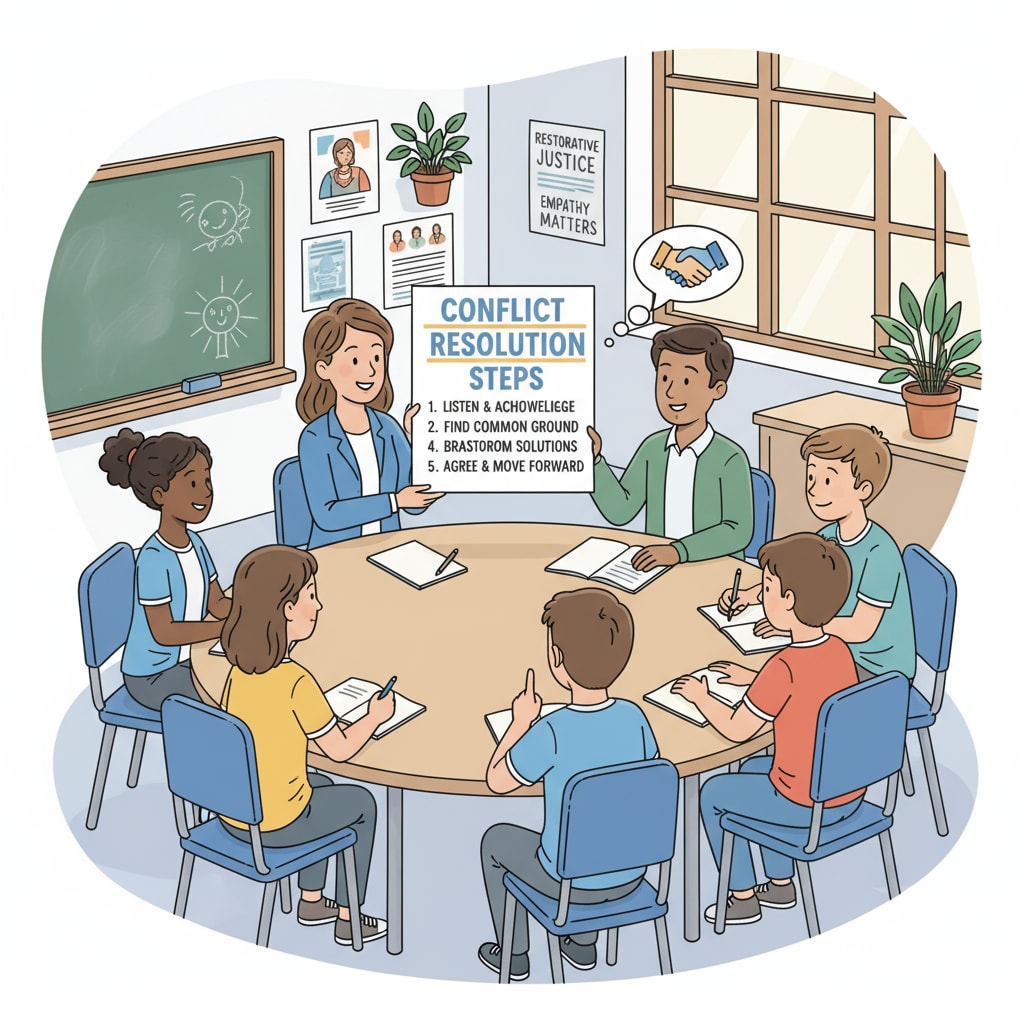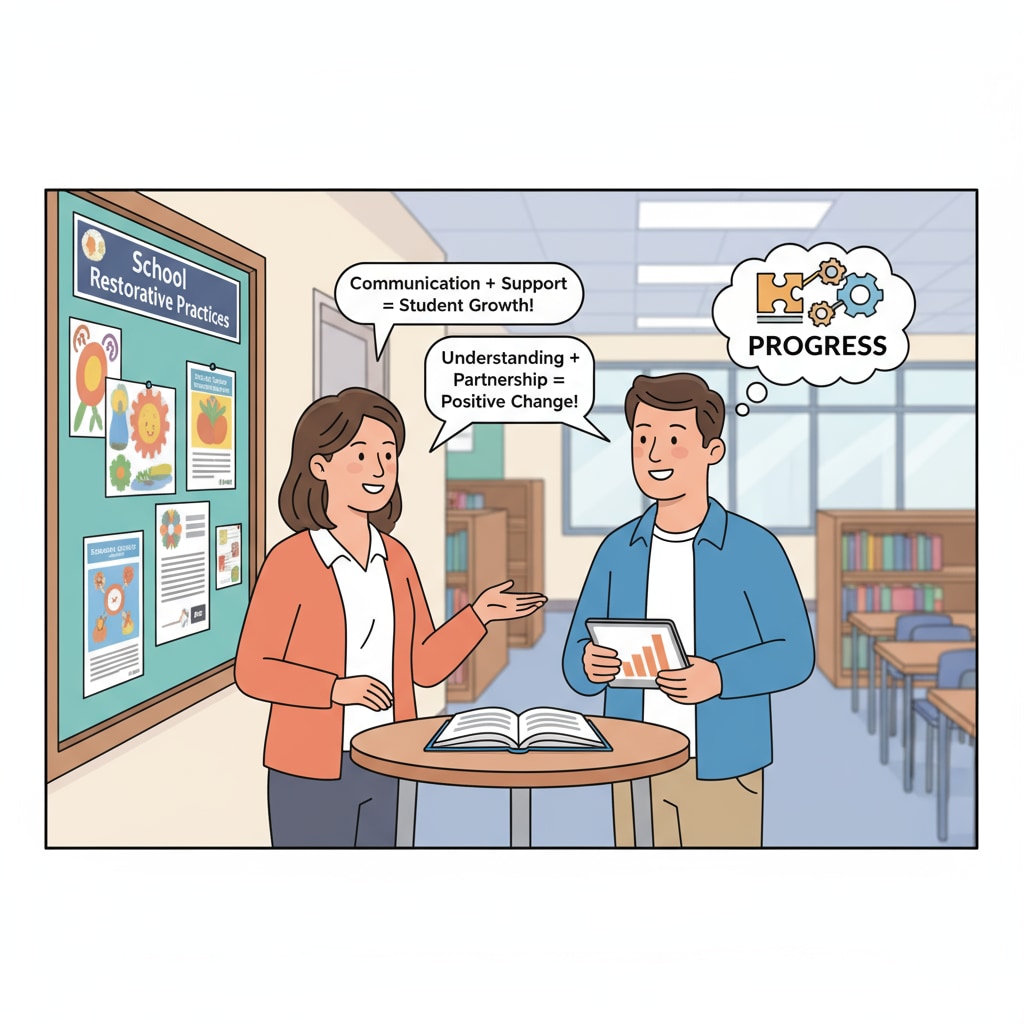In the realm of education, the intersection of school discipline, parental demands, and restorative practices often presents complex challenges for school administrators. As schools strive to implement restorative practices aimed at fostering positive relationships and learning environments, they may encounter situations where parents have more traditional or even excessive discipline expectations. This article delves into how school leaders can navigate this conflict to ensure the well-being and growth of students.

The Clash of Expectations
Parents and schools may have different perspectives on discipline. Some parents, influenced by their own upbringing or concerns about academic performance, may advocate for strict disciplinary measures. They might believe that swift punishment is the most effective way to correct a child’s behavior. However, schools are increasingly adopting restorative practices, which focus on understanding the root causes of misbehavior, repairing relationships, and promoting personal growth. This difference in approach can lead to tension. For example, a parent might demand that a student be suspended for repeated minor infractions, while the school’s restorative practice policy would involve a conference with the student, the affected parties, and a plan to address the underlying issues. Understanding Different Disciplinary Approaches
Effective Communication as the Foundation
Open and honest communication is crucial in bridging the gap between parental demands and school restorative practices. School administrators should initiate regular meetings with parents to explain the philosophy and benefits of restorative practices. By sharing success stories and data on how these practices have improved the school climate and student behavior, parents can gain a better understanding. Additionally, listening to parents’ concerns and fears is essential. This two-way communication can help build trust. For instance, if a parent is worried about their child not learning the importance of consequences, the school can explain how restorative practices incorporate meaningful consequences that are focused on learning and growth. The Importance of Parent-School Communication

Another aspect of communication is involving parents in the restorative process. When a student has an incident, inviting parents to participate in the restorative conference can give them a firsthand look at how the process works. This not only keeps them informed but also allows them to contribute to the solution.
Readability guidance: The key points here are the importance of two-way communication and involving parents in the restorative process. These steps can help reduce the conflict between parental demands and school restorative practices.
Building Educational Consensus
School administrators need to work towards building a shared educational vision with parents. This can be achieved through workshops, seminars, or informational sessions. By educating parents about the long-term benefits of restorative practices on a child’s social, emotional, and academic development, parents are more likely to be on board. For example, research has shown that students in schools with restorative practices have higher levels of empathy and better conflict resolution skills. Presenting such evidence can convince parents that these practices are in the best interests of their children.
Furthermore, schools can involve parents in the development of school discipline policies. By seeking their input and incorporating their reasonable suggestions, parents will feel more invested in the process and be more accepting of the final policies.
Readability guidance: The main strategies are educating parents about the benefits of restorative practices and involving them in policy development to build consensus.
Establishing Collaborative Partnerships
Creating a collaborative partnership between parents and schools is essential for successful implementation of restorative practices. Schools can organize parent volunteer programs where parents can assist in restorative activities, such as peer mediation or conflict resolution workshops. This hands-on involvement can help parents better understand the process and also strengthen the school-community bond.
In addition, schools can provide resources and training for parents on how to use restorative approaches at home. By equipping parents with the same tools and techniques used in school, there can be a more consistent approach to discipline both at school and at home.
Readability guidance: Key actions include parent volunteer programs and providing parental resources for home implementation to foster collaboration.
In conclusion, school administrators play a vital role in managing the conflict between parents’ excessive discipline demands and school restorative practice policies. By focusing on effective communication, building educational consensus, and establishing collaborative partnerships, schools can honor their commitment to restorative practices while also respecting parental concerns. This balanced approach will ultimately contribute to the healthy development of students, creating a positive and harmonious learning environment for all. The intersection of school discipline, parental demands, and restorative practices can be navigated successfully with the right strategies and a shared commitment to student well-being.


